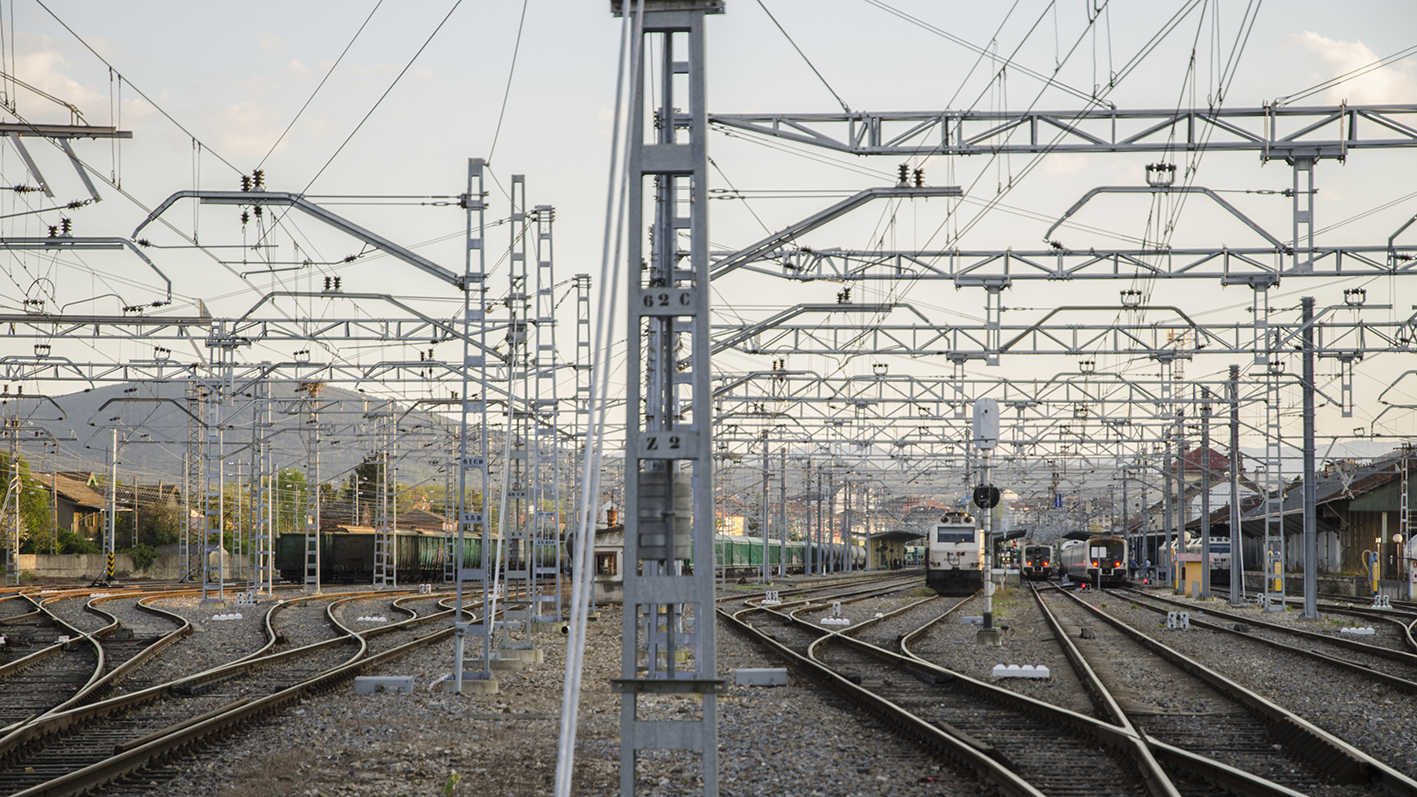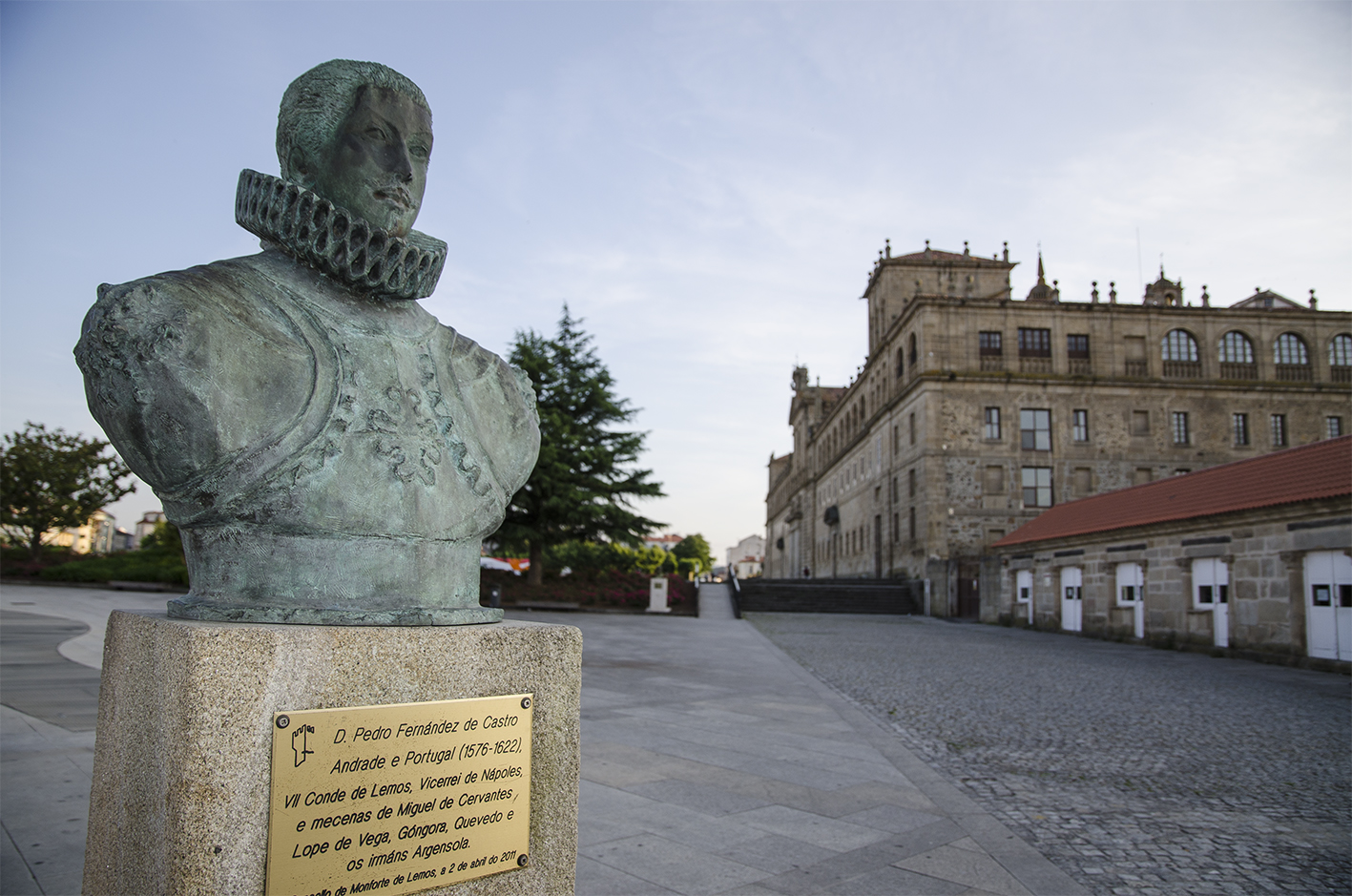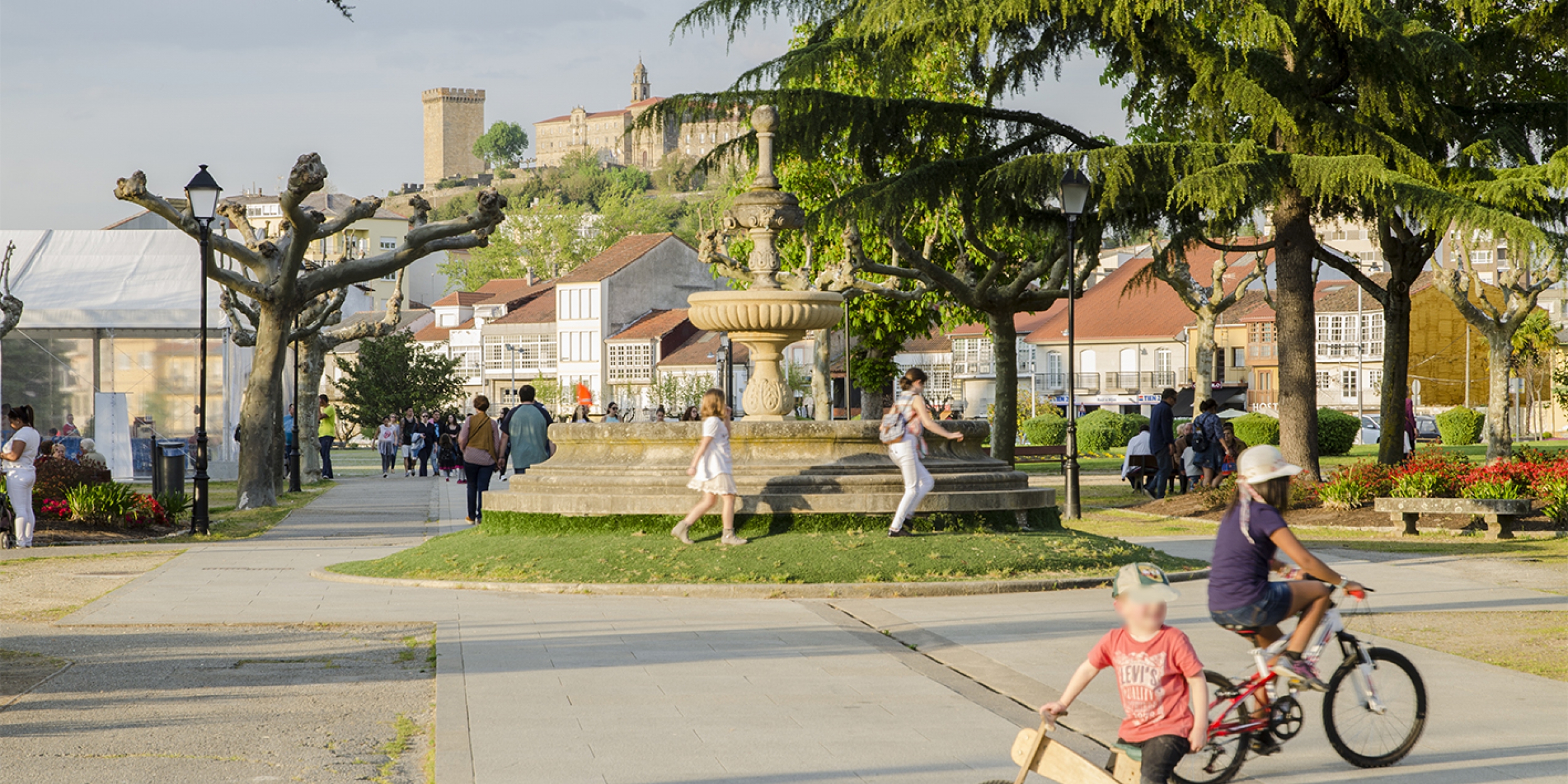Welcome to Monforte de Lemos!!
If you have come here it is because you want to get to know our region, you want to get close to the Ribeira Sacra, visit our monuments or go out for a drink in the cobbled streets of the old town. The city of Monforte de Lemos welcomes you, because Monforte has been a city since 1885, when Alfonso XII gave Monforte the title of city in recognition of its developmental work in the construction of the railway line from A Coruña to Madrid.

Nowadays the population of Monforte is around 20,000 inhabitants, therefore, the centre is compact and easy to get around by foot, and you can find all the services that you might need to enjoy your visit here. Monforte is a city of mists that sometimes cover the valley, leaving only the castle in view, a city of balmy summer nights which can be enjoyed at any terrace bar or by taking a stroll along the river, a city where the river Cabe can freeze over in winter, whilst in the summer the boats ply its waters full of groups of friends. As well as all this, Monforte is the history of the railway in Galicia (Headquarters of Muferga – the Galician Railway Museum), the Mount of San Vicente (Castro Dactonio) which dominates the valley, the Escolapios (Colegio de Nuestra Señora de la Antigua) known as the Galician Escorial which commands the Compañía square, one of the best museums of Sacred Art in the Iberian peninsula (Museo de las Clarisas). It is wine and friendly people, it is tradition and a splendid past associated with names such as the VII Count of Lemos or Cardinal Rodrigo de Castro.

The birth of Monforte de Lemos is inevitably linked to the Castro Dactonio as it was called by the Romans. Before the Romans, the Lemavos “inhabitants of the fertile earth” lived in the castro. In the 8th Century, after the destruction of the castro by the Muslims, the Benedictine community came to settle here whilst a Jewish enclave dedicated to commerce was set up on the sides of the castro (Monforte forms part of the network Caminos de Sefarad Visit the web Caminos de Sefarad). In the Medieval Age Monforte was an example of a fortress city constructed around a monastery (today it is a Parador Hotel) and a castle with a wall lined with defensive towers, of which important sections still remain today. In the 15th Century, the Counts of Lemos obtained the Castro in perpetuity and the 16th and 17th Centuries were one of the golden ages for Monforte overseen by the VII Count of Lemos, Don Pedro Fernández de Castro, Viceroy of Naples and President of the Supreme Court of Italy. The Count was also a patron of great literature such as that by Cervantes, Lope de Vega and Góngora. His greatest legacy to the city (together with his wife Catalina de la Cerda y Sandoval) was the donation of Spanish and Italian sacred art which is now part of the Museo de Arte Sacro de la Clarisas. The great uncle of the VII Count of Lemos, the Cardinal Rodrigo de Castro, left his own legacy with the construction of the Colegio Nuestra Señora de la Antigua that includes the impressive altarpiece by Francisco de Moure in the church and the art gallery with works of art by El Greco and Andrea del Sarto.
After the Napoleonic invasion, that was resisted in Monforte by the Monforte Government presided over by the Abbot of San Vincente, another golden age arrived in the form of the railways. In 1883 the railway line from Madrid to A Coruña was inaugurated and the city became the most important railway hub in Galicia and for decades it was a flourishing and prosperous city with much political and union activity. Today, Monforte de Lemos is the second biggest city in the province, after the capital Lugo, and one of the best places to explore the Ribeira Sacra. Nowadays the principle activities of the city are tourism and service industries.
Watch vídeos Monforte Monumental
Download documents Map of the old town

